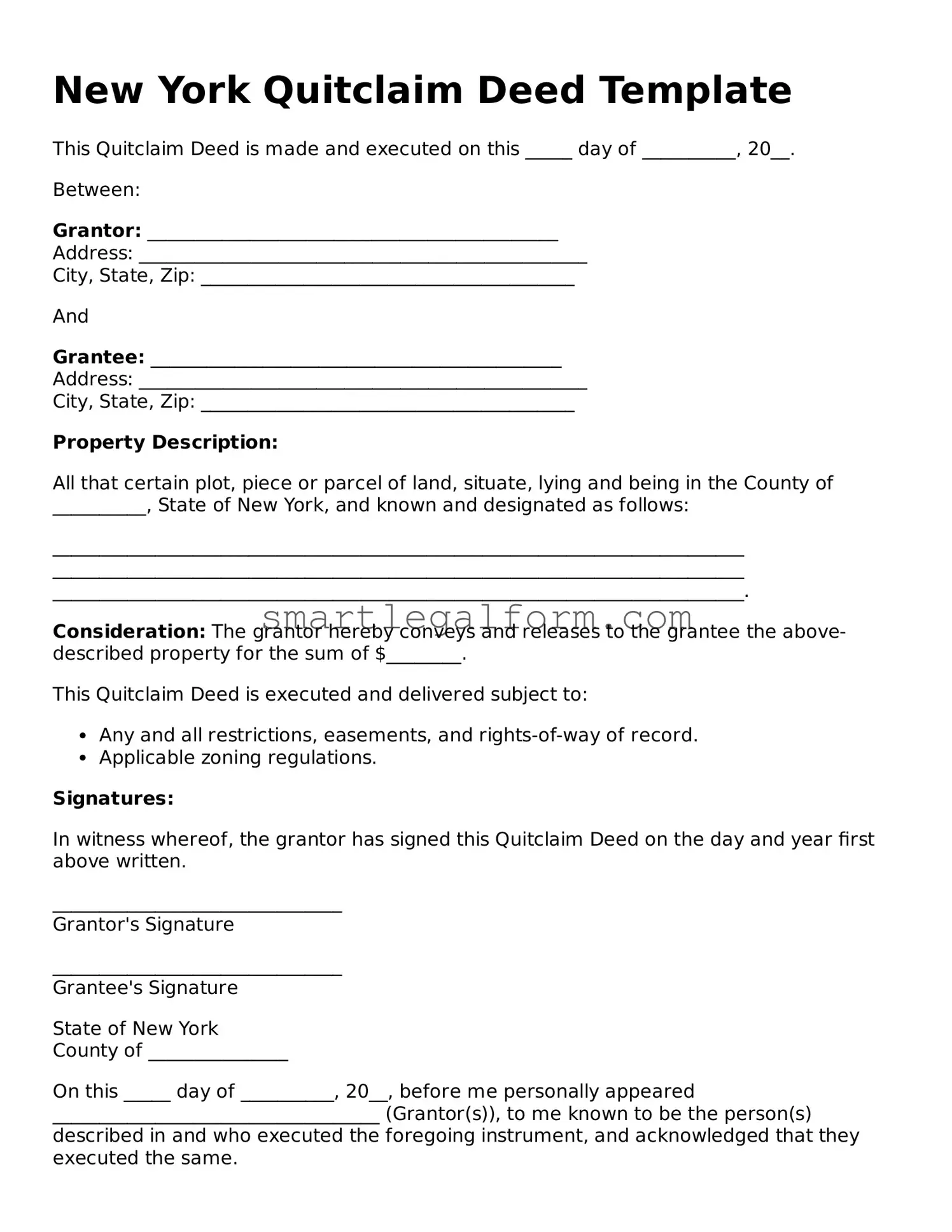New York Quitclaim Deed Template
This Quitclaim Deed is made and executed on this _____ day of __________, 20__.
Between:
Grantor: ____________________________________________
Address: ________________________________________________
City, State, Zip: ________________________________________
And
Grantee: ____________________________________________
Address: ________________________________________________
City, State, Zip: ________________________________________
Property Description:
All that certain plot, piece or parcel of land, situate, lying and being in the County of __________, State of New York, and known and designated as follows:
__________________________________________________________________________
__________________________________________________________________________
__________________________________________________________________________.
Consideration: The grantor hereby conveys and releases to the grantee the above-described property for the sum of $________.
This Quitclaim Deed is executed and delivered subject to:
- Any and all restrictions, easements, and rights-of-way of record.
- Applicable zoning regulations.
Signatures:
In witness whereof, the grantor has signed this Quitclaim Deed on the day and year first above written.
_______________________________
Grantor's Signature
_______________________________
Grantee's Signature
State of New York
County of _______________
On this _____ day of __________, 20__, before me personally appeared ___________________________________ (Grantor(s)), to me known to be the person(s) described in and who executed the foregoing instrument, and acknowledged that they executed the same.
_______________________________
Notary Public
My Commission Expires: _______________
